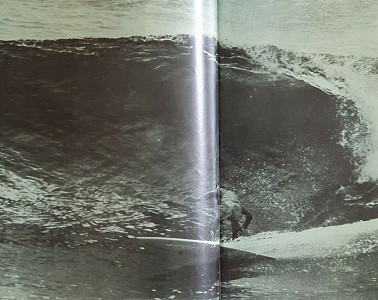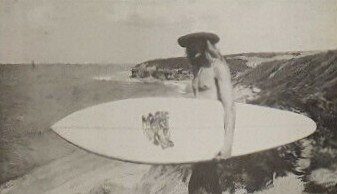
surfresearch.com.au
interview : rick neilsen, 1973.
interview : rick neilsen, 1973.
|
|
|
|
|
|
 |
surfresearch.com.au
interview : rick neilsen, 1973. |
 Neisen,
Photo: Brown
|
Page
9 Rick
Neilsen
Interview.
S.W.:
What's the
story with
your board
business, you
know, how'd
you get into
it, how's it
going, that
sort of
thing?
Rick: Paul and myself started making boards for ourself about two years ago. Before that we were working for other people, but we were getting nailed. S.W.: What happened? Paul won the Australian titles, down at Bells, I forget which year, the one at Bell's anyway. Paul won that one and I came fourth, we were working for a certain manufacturer at the time and we came back thinking that we might, well, we thought we deserved a little something a bit better than we were getting. S.W. What did you do, lay it on him for some extra bread or something? Rick: Yeah! Paul wanted to get right into surfing so we wanted to be paid a retainer, just a little bit of dough so he could go to the beach. Concentrate completely on riding waves. |
 |
Page
?? (Professional Contests) Rick: A lot of people to help us. S.W.: How much money do you figure you'll need? Rick As much as we can get to start with, get that first one going, once we get that going we'll be right. You know, the sponsors will see how much publicity they can and will get and they'll just freak, then things really start moving for the next year. But the first one is the hardest one. Once the first one is going I think we're sweet. S.W.: What sort of people do you think would be good sponsors, have you given this part any thought. Rick: Huh, anyone with dough is a good sponsor but really I'd like to see professional contests sponsored by the people that make money out of surfing and surfers. |
 |
Rick
Neilsen into leg-ropes.
Tracks, March 1973, page 5. (possibly Burleigh Heads). Jimbo's just taking it for a for a tube at Winki. She is super long and once she takes off, hold on. Lost the dimensions, but the looks are there. |
Jack McCoy's Neilsen Gun Tracks Number 30 March 1973, page 26. |
| Around 1973, Knackers was also
shaping at Free Fluid Surfboards
at
Caloundra, Queensland. He later started his own company around Noosa Heads. |
K.K.K. Surfboards
1975 Noosa? Kingsley Knackers Kernovske |
 |
|
|
|
|
|
|